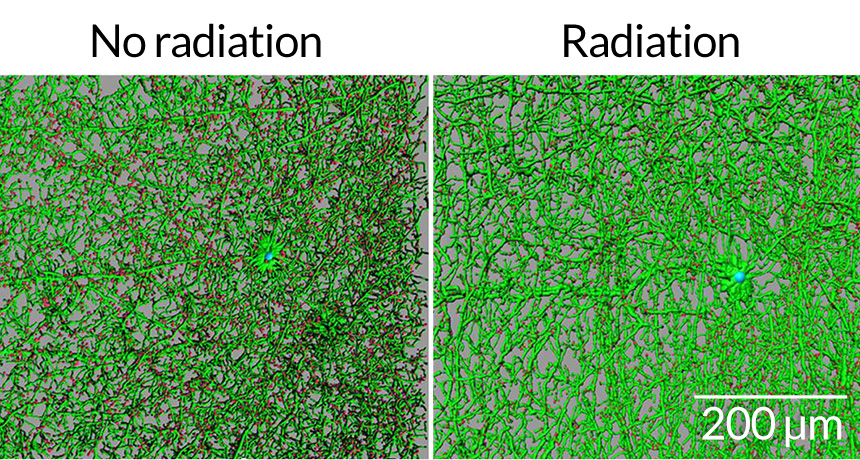Zipping to Mars could badly zap brain nerve cells
Particle blasts similar to cosmic radiation caused memory, learning woes in mice

BRAIN ZAP After radiation exposure, mouse dendrites (green) in the medial prefrontal cortex were shorter and branched less than those of mice not exposed to radiation, as seen in this digital reconstruction. Exposed dendrites also had fewer docking sites (red) that detect messages from other cells.
V. Parihar et al/Science Advances 2015